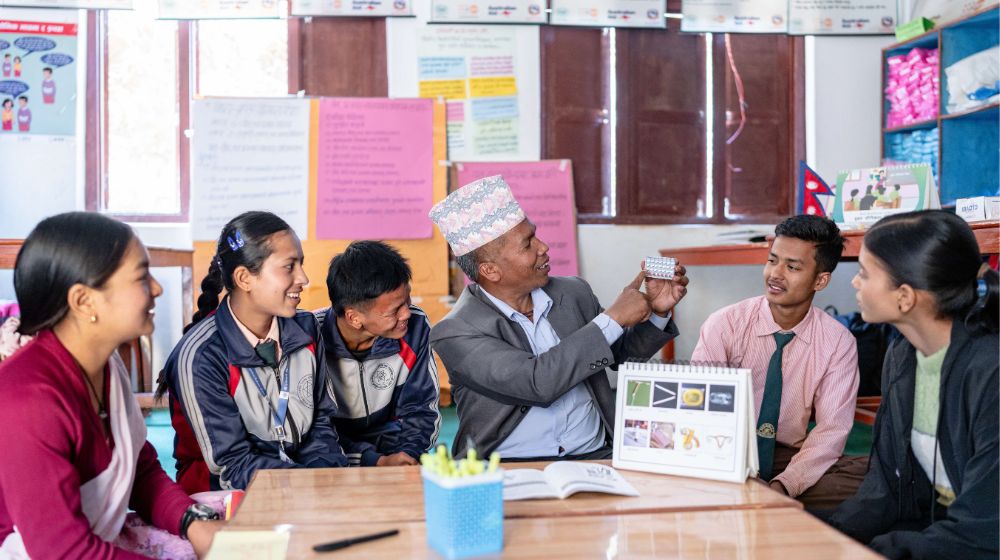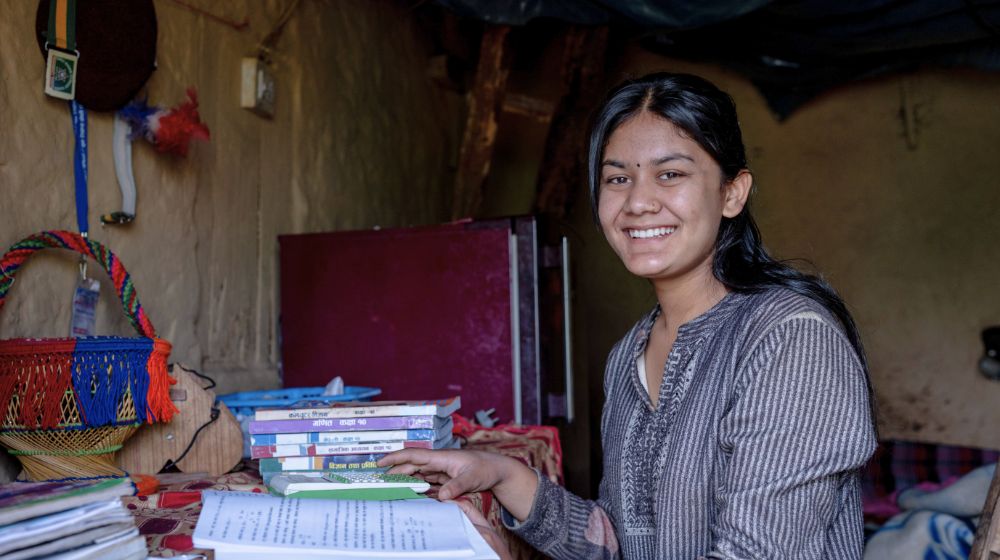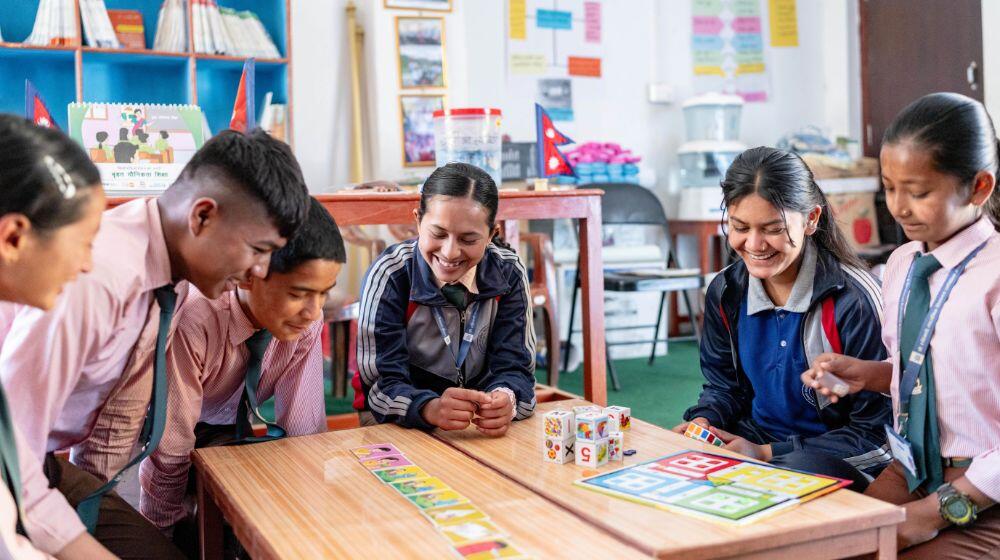Ayusha Gautam has not experienced menstruation. She feels, however, very confident that she knows what to do when it arrives because of the age-appropriate sexuality lessons she has received from her teacher.
As a sixth grader, she feels well prepared for puberty as a result of the lessons at Rukmini Secondary School in Lumbini province. The teachers have created an open and inclusive environment where students feel comfortable asking questions and exploring important topics about puberty, contraceptives, and menstrual hygiene management, which are crucial for adolescent girls and boys to successfully navigate the changes they are about to experience.
“I have learned everything about periods; I know it is necessary to go through them, and women go through their periods every month. I know all about why it happens, what happens inside my body, and how I should prepare for it.”
This has not happened overnight. Seven years ago, the school opened a corner in the school for pupils to explore and learn more about their sexual and reproductive health and rights. This corner became a safe space for the students to hang out, discuss topics around their sexual and reproductive health and rights, and share experiences. The approach was also popular with teachers in the school who witnessed the benefits for the students. It has subsequently widened out into a school-wide approach.
When it was introduced, the subject of comprehensive sexuality education was not without its challenges.

Bhupendra Acharya explains, “Even just a few years ago, teachers would feel awkward around the students teaching sexuality education. Practices such as separating boys and girls were commonplace. But now we have created an environment where students and teachers can openly talk about issues.” The school has turned that around after considerable efforts by the teachers and students.
The benefits of the support for comprehensive sexuality education extend further, explains Bhupendra Acharya. “We want our students to complete their education. Early marriage and pregnancy in this district are very high. This kind of learning means that girls have the power of information to make the right choices. One particular issue the school is proud of is how they deal with discrimination in relation to sexual and reproductive health and rights.
In many parts of Nepal, menstruation is a taboo subject that can lead to dramatic restrictions on the lives of adolescent girls, including exclusion and discrimination leading to stigma and shame. The approach of the school was that this discrimination impacted girls’ education and needed to be tackled in the school environment.
Chandra Bahadur Malla, the headmaster, explains how the school has changed the way it thinks through these challenges to become more student-centric, responding to their needs, including their sexual and reproductive health and rights, in a school-wide approach. "Before, we had one bathroom for both girls and boys. Girls would skip out of school during their periods because it was difficult for them to change their sanitary pads during school hours. If a girl’s period started in school, they would disappear and go back home in the middle of the day,” he explains.
The school management changed the way it has thought through this problem, shaped by its proactive, comprehensive sexuality education programme. Keeping girls in school became the priority. “We constructed a new building that included separate bathrooms for boys and girls. In the girls’ bathroom, there is additional space for changing pads, clean water, and anti-bacterial soap, as well as an incinerator to dispose of sanitary pads,” beams Bisan Maya proudly. This makes a huge difference for the girls in the school.

Sarada Sunar, who is in grade 10, stresses, “In our village, we don’t have a private place for the disposal of pads, so we have to walk to the hilltop away from sight, and we burn our used pads. These new facilities make our lives much easier.”
The school teachers and pupils are also using their experiences to reach out to communities. Teachers are trying to get parents involved with what the students are learning. And the students share their new knowledge with friends and family members, contributing to a more informed community. Rupa, a 17-year-old tenth grader, has three sisters. “I talk about body rights, menstruation management, and early child marriage with my mother and sisters. “My younger sisters weren’t getting any of this information at her school. Now that I've learned, I can teach them and make sure they know how to stay safe and healthy.”



